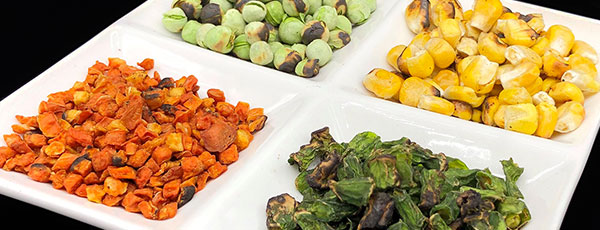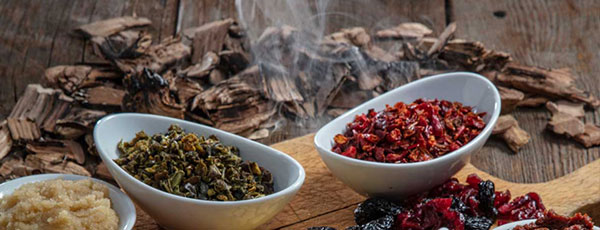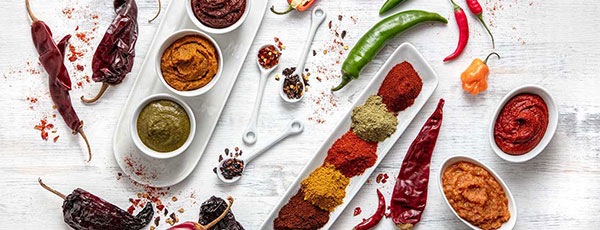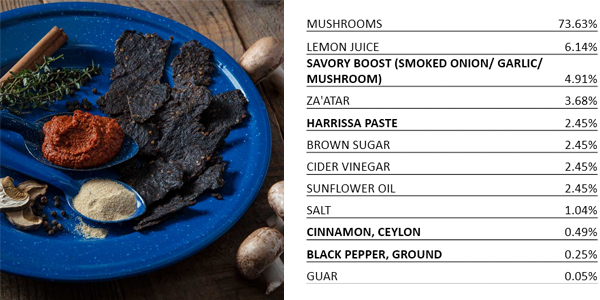Consumers are hungry for plant-based foods that taste amazing. Three out of five are purposefully incorporating more plant-based products and meat alternatives into their regular diets. In this article and accompanying video, we’ll take a look at this growing consumer trend and provide solutions for creating delicious, crave-worthy, marketable plant-based meals and snacks.
Consumer Concepts of Plant-Based:
Taste & Texture Concerns
We are all already familiar with the way the plant-based trend is taking off, so I won’t go into stats you’re already familiar with. I’ll just touch on a couple key concepts and pain points from the consumer point of view: Taste and Texture
As we know, plant-based foods aren’t just for vegans. More and more meat eaters are actively reducing their meat intake. This is the market that most scrutinizes meat replacement products, looking for the taste and texture that they recognize, but with the health and environmental benefits of plant-based alternatives.
The problem is, half of consumers believe plant-based meat replacement products don’t taste good. Other consumers don’t like the texture of vegetables, believing them to be soft, gritty, or another texture that they don’t associate with their beloved meat.
Research by Innova Market Insights has shown that taste is one of the topmost important qualities to consumers when shopping for food. If 3 in 5 consumers already purchase more plant-based products – even with the idea that these products won’t taste as good – imagine how that number would soar if they knew how delicious plant-based meals could actually be!
So many plant-based foods try and taste like meat. That’s where they fall short. Replicating meat while remaining clean label is a difficult task, to say the least. You don’t have to make plants taste exactly like a hamburger in order to win over the consumers. There are other ways – great-tasting ways – to satisfy the meat craving.
3 in 5 consumers are purposefully incorporating more plant-based products into their regular diets.
The “less meat” trend spans all age groups.
WHY?
- Health benefits
- Environmental benefits
BUT…
50% believe meat replacements don’t taste good.
Mimicking meat is not necessary.
Remind consumers of meat – and make it taste great!
Source: Innova Market Insights Top Flavor Trends 2020
Source: Innova Market Insights Growing Opportunities in the Plant Based Marketplace
"Meaty" Texture: Dried Tomatoes

Dried tomatoes have a meat-like texture and can be used to mimic the mouth-feel of slow-cooked meat. Their texture can benefit products like plant-based patties, nuggets, and sausages.
By themselves, tomatoes obviously don’t taste like steak or chicken. However, they do carry a characteristic umami flavor. Umami is the taste produced by protein that has been broken down into amino acids. While it isn’t solely created by meat, the brain will often associate umami with animal protein, and bringing about this taste sensation helps satisfy the meat craving.
Add to this the dense, almost-chewy nature of dried tomatoes, and you have an ingredient that reminds the brain and the mouth of meat, while providing the savory-sweet flavor of tomato.
Adding seasoning blends designed to invoke umami will add to the brain trickery. Culinary Farms’ “Savory Boost” seasoning is a blend of Craft Smoked onion, garlic, and mushroom powder.
Dried Tomatoes in Plant-Based Meals
- Add meat-like texture
- Mimic the mouth-feel of slow-cooked meat
- Incorporate umami flavor
Combine dried tomatoes and walnuts for a “meaty” texture and taste.
Incorporate into plant-based meals that feature tomato-heavy sauces like marinara or bar-b-que.
Add “Savory Boost” or similar seasoning blend to enhance Umami flavor.
Grilled Flavor in Plant-Based:
Fire-Roasted Dehydrated Vegetables

For most Americans, the grill has typically been reserved for meat and the occasional grilled corn on the cobb. Adding fire-roasted flavor and charred appearance to plant-based meals adds the perception of a meal cooked on the grill at a backyard BBQ, both in taste and appearance.
Fire-Roasted Dehydrated Vegetables
- Add grilled flavor and charred aesthetic associated with backyard bar-b-ques and grilled meats
- Clean label
- Include “Fire Roasted” on your label using dehydrated ingredients
- Add complexity and roasted notes to vegetables
- Add the perception of a meal cooked on the grill, both in taste and appearance.
Natural Smoked Flavor in Plant-Based:
Craft Smoked Veggies, Tomatoes, & Seasonings

Like fire roasting, smoked flavor is typically associated with meat and fish, particularly ham and bacon. In this way, adding smoked ingredients to plant-based meals helps satisfy the meat craving. This can be accomplished by adding ingredients such as smoked dehydrated vegetables, seasoning blends, pastes, or purees.
One example could be a dry split pea soup mix that incorporates smoked ingredients to imitate the smoked flavor of ham.
Another example could be a meatless smoky chorizo spread.
Craft Smoked Ingredients
- Smoke flavor is typically associated with meat and fish, especially ham and bacon
- Remind consumers of meat by adding Craft Smoke to virtually any ingredient
Application Inspiration:
- Ham-free Split Pea Soup: Incorporate Craft Smoked onion powder, dried carrots, and sea salt in a dry mix – nobody will miss the ham!
- “Chorizo” Spread: Pure Sun Dried Tomato Paste for umami flavor and sweet notes, Savory Boost (smoked onion, garlic, mushroom) for “meaty” flavor, smoked paprika for authenticity
Make It Spicy: Authentic Regional Chiles

Add flavor and spice to plant-based products with chiles.
Chiles generally take over the flavor of a dish, so it’s very easy to take recipes that typically include meat and chiles, and simply remove the meat without losing the innate quality of the dish. For example, Jackfruit Chile Verde or Harissa Mushroom Jerky.
This also speaks to the established “spicy specificity” trend, in which consumers are interested in spicy foods made with authentic, regional chiles, and the trend toward world flavors and mash-ups.
You can also add an intriguing textual perception by using various cuts of dried or frozen chili. Custom blending and pre-fab flavor formulas can be inspired by meat dishes and used in plant-based applications such as smoky jerk seasoning, harissa paste, and more.
Authentic Regional Chiles
- Give consumers dishes they love that typically use meat – but simply leave out the meat
- Chiles are often the signature flavor in a meal – they won’t miss the meat!
Culinary Farms offers all of the solutions discussed above. Please explore the website for more ideas. We look forward to working with you and finding solutions to your plant-based product needs.
Application Inspiration
Plant-Based "Chorizo" Spread
Key Flavors:
- Pure Sun-Dried Tomato Paste for umami flavor and sweet notes
- Savory Boost for “meaty” flavor in plant-based dishes
- Smoked Paprika for authenticity
Culinary Trends:
- Plant-based meat substitutes
- Smoky flavor
- Plant forward with full flavor
Bold indicates ingredients carried by Culinary Farms or parent company BCFoods.

Harissa Mushroom Jerky
Key Flavors:
- Clean label Harissa Paste for marinade
- Savory Boost for “meaty” flavor in plant-based products
Culinary Trends:
- Plant forward with full flavor
- Spicy snacking
- Middle Eastern/ Mediterranean flavors
Bold indicates ingredients carried by Culinary Farms or parent company BCFoods.


